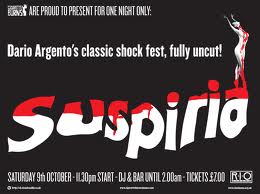Written & Directed by Stanley Kubrick
Based on Anthony Burgess’ novel, A Clockwork Orange
A Clockwork Orange, directed by Stanley Kubrick, was the centre of much controversy when it was released in 1971. This meant that it was withdrawn from distribution and was released in the UK over 20 years later. Stanley Kubrick’s approach to directing is described as a “self-conscious approach to filmic story telling … [which] demanded an equally self-conscious spectator” this is obvious in this film which is, in itself, conscious of being an art form shown in such scenes as the opening scene.
The mixture of electronic and orchestral music played in the background of the opening scene establishes the film as almost futuristic but with Kubrick’s view on contemporary Britain. The establishing shot introduces the protagonist, Alex, staring straight at the audience, fearless, the leader of his “droogs”. Crime and Beethoven is his world, which is soon turned upside down with his droogs turning on him resulting in him spending time in jail and leading to an experimental rehabilitation treatment in which, it seems, Beethoven turns on him too. Kubrick’s view of the youth of that time is shown, although Alex is seen as immoral, the film will be from his point of view, and so Kubrick can be seen as sympathetic towards these youths as he is encouraging the audience to see their view of the world by making Alex the narrator of the story. Not forgetting Kubrick’s famous bathroom scene, later on in the film, which links both back to one of the first crimes we see Alex commit and directly to the ending of the film.
There seems to be no clear genre for A Clockwork Orange as it has been described as an “ultra- violent” film which is a term taken from the film suggesting it is a completely new genre of film. The term suggests a cross between a film about the nightlife culture of the time, due to the play on the words “ultra violet”, and a crime film. Another attempt at naming the genre of this film is “dystopian” which suggests an element of a zeitgeist of distrusting both the government and the youths of that time. The most commonly used genre that this film is put into is “art-house” which isn’t as much of a description of the film as the kind of audience it has, due to the fact that art house films generally have niche audiences.
One of my favourite films of all times and one of the most controversial, A Clockwork Orange is a must see for any film lover. Whether you love it as much as me or you are appalled by the graphic violence, you are bound to have an opinion.


